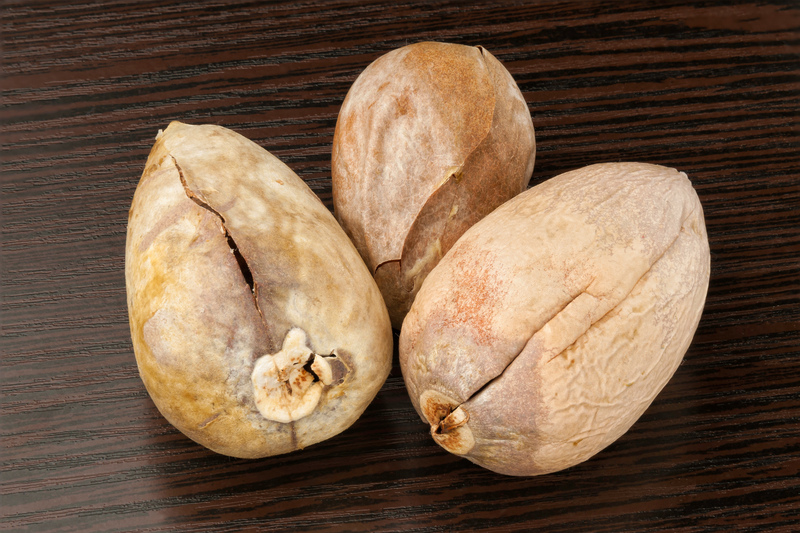Reduce Yard Clutter With Effective Tree Stump Solutions
Are stubborn tree stumps turning your beautiful yard into an eyesore? In many homes, unsightly stumps left after tree removal become an unexpected problem. Not only do they undermine your backyard's curb appeal, but they can also become breeding grounds for pests and fungal growth, impede landscaping efforts, and even compromise the safety of your outdoor spaces. In this comprehensive guide, you'll discover practical and sustainable tree stump solutions to effectively reduce yard clutter and reclaim your garden's beauty and function.

Why Is Tree Stump Removal Essential For A Tidy Yard?
Tree stumps aren't just an aesthetic problem -- they can create real hazards and obstacles in your yard. Whether you have recently felled a tree or inherited stumps when you moved in, it's vital to address them for several reasons:
- Prevents Tripping Accidents: Protruding stumps are a safety hazard for children, pets, and even adults.
- Stops Pest Infestation: Rotting wood is an ideal habitat for termites, ants, beetles, and other destructive insects.
- Hinders Lawn Maintenance: Mowing and landscaping become challenging when you have to maneuver around awkwardly placed stumps.
- Prevents Fungi and Disease Spread: Decomposing stumps can harbor fungi and pathogens that threaten healthy trees and plants nearby.
- Boosts Aesthetic Appeal: Removing tree stumps instantly makes outdoor spaces more attractive and welcoming.
Ignoring these issues can lead to bigger problems, turning tree stumps into magnets for yard clutter and costly long-term issues.
Effective Tree Stump Solutions to Consider
With several approaches available, choosing the right tree stump removal or management solution depends on your yard's needs, budget, and future landscaping plans. Let's explore the most reliable and efficient methods to reduce clutter and restore your yard:
1. Professional Tree Stump Grinding
Stump grinding remains the most popular and effective way to eliminate unsightly remnants left behind after tree removal. With this process, a professional uses a powerful, specialized grinder to shred the entire stump down to well below ground level -- typically 6 to 12 inches. This mulched material can then be used as organic compost or removed completely.
Advantages of Stump Grinding:
- Fast and Efficient: Most stumps, regardless of size, can be ground down within a couple of hours.
- Minimal Yard Disturbance: Unlike heavy equipment removal, stump grinding is less disruptive to existing landscaping.
- Prevents Regrowth: Grinding destroys the core stump and root connections, minimizing the chance of re-sprouting.
2. Stump Removal By Excavation
Excavation or "full removal" involves physically pulling the entire stump and root ball out using machinery such as backhoes or stump pullers. While more labor-intensive, it completely eliminates the physical wood and root network from your yard.
- Best For: Large, mature tree stumps with substantial root systems, or when planning future construction/landscaping at the same location.
- Downside: This method causes significant ground disturbance and may require extensive soil grading afterward, making the process more invasive and costly.
3. Chemical Tree Stump Removal
If you need a DIY-friendly and affordable solution, chemical removal may be a good option. This approach involves drilling holes into the stump and applying a specialized stump remover, often formulated with potassium nitrate. Over several weeks or months, the chemicals break down the lignin inside the wood, accelerating decay so the stump can be chopped up, burned, or left to rot.
- Low Physical Effort: Minimal digging or mechanical work required.
- Affordable: Chemicals and tools are relatively inexpensive and available at most hardware stores.
- Eco Considerations: Always follow manufacturer instructions for safe use and to minimize harm to nearby plants, children, or pets.
4. Natural Tree Stump Decay
For environmentally conscious homeowners, encouraging natural decomposition is the most sustainable approach -- albeit, the slowest. The process can be sped up by:
- Drilling holes into the stump and filling them with compost, soil, or even high-nitrogen fertilizer to invite wood-decomposing fungi and bacteria.
- Keeping the area damp and covering with tarps or mulch to lock in moisture and heat.
5. Burning Out The Stump
Controlled burning is another traditional technique: After boring holes, fill them with kerosene or fuel oil (never gasoline), allow it to soak, then ignite. The slow burn consumes the stump from the inside.
Warning: Only attempt this if local regulations permit open burning, and always prioritize safety and environmental considerations.
Not recommended next to buildings, fences, or for stumps with deep or widespread roots.
Other Creative Solutions For Tree Stumps
If complete removal isn't practical or desired, consider repurposing your old tree stumps to transform yard clutter into functional or aesthetic features:
- Planter Features: Hollow out the stump and fill it with vibrant flowers, succulents, or trailing vines to create a natural garden bed centerpiece.
- Lawn Sculptures: Carve or decorate the stump as whimsical garden decor. Creative painting, fairy houses, or seats for children can bring new life to old wood.
- Garden Art: Use multiple stumps of varying heights as bases for outdoor tables, stepping stones, or rustic art installations.
- Wildlife Habitats: Stumps left in woodland gardens can offer homes for pollinators, birds, or beneficial insects when managed thoughtfully.
Planning For Yard Transformation After Stump Removal
Once your tree stumps are gone, the possibilities for a clutter-free yard are endless! Here are a few practical ideas for improving your landscaping post-stump removal:
- Reseed Or Sod: Quickly cover up bare spots with new grass or sod for seamless blending with your existing lawn.
- Install Flower Beds: Turn former stump locations into colorful garden beds, rock features, or shrubbery displays.
- Upgrade Hardscapes: Lay down patios, walking paths, or install outdoor seating in reclaimed open spaces for improved function and enjoyment.
- Tree Replacement: Carefully plan for new trees in appropriate locations, choosing species that suit your soil and climate.
A clutter-free yard improves property values, increases usable outdoor space, and creates a personalized haven for relaxation and entertainment.
DIY Versus Hiring Professionals: Which Tree Stump Solution is Best?
When to choose professional stump removal:
- If you lack the equipment or expertise for grinding or excavation.
- For large stumps, or those close to utilities, buildings, or fences where safety is paramount.
- When seeking guaranteed results with minimal disruption.
- For quicker project completion and proper site restoration.
Why DIY might work for you:
- When dealing with small, manageable stumps in open spaces.
- If you have time and wish to reduce costs.
- When prioritizing natural decay or creative reuses over complete removal.
Always assess your specific situation, budget, and abilities before selecting the best method for your needs.

Frequently Asked Questions About Tree Stump Solutions
How long does stump removal take?
Grinding: Most stumps can be removed within a few hours.
Chemical methods: Expect 4-12 weeks for full decay.
Excavation: 1-2 days depending on size and location.
Natural decay: May take several years without intervention.
Is it necessary to remove the roots, too?
If you plan to build or plant at the same location, full root removal is advised. For most lawns, stump grinding below the ground surface sufficiently prevents regrowth.
Can I plant a new tree where an old stump was removed?
Yes, but... Remove as much of the old root system as possible and refresh the soil to avoid nutrient depletion, pests, and diseases. Consult a landscaping expert for best results.
Is burning stumps safe?
Burning stumps is only safe where allowed by local fire codes and when basic fire-safety practices are observed. Always obtain permits, keep firefighting tools nearby, and never use flammable liquids like gasoline.
Conclusion: Transform Your Outdoor Space With Effective Tree Stump Solutions
Don't let old stumps tarnish your yard's potential! By choosing the right tree stump solution -- whether removal, grinding, decay acceleration, or creative reuse -- you'll instantly reduce yard clutter, improve safety, and elevate your property's curb appeal.
Whether you opt for professional support or tackle a DIY approach, removing tree stumps unlocks a world of landscaping possibilities. It's an investment in the beauty, value, and safety of your home.
Ready to reclaim your yard? Explore these effective stump solutions and take the first step toward a cleaner, clutter-free landscape today!